Neil Cunningham Dobson has explored more shipwrecks using remotely operated vehicle (ROV) technology than any other marine archaeologist in the world.
He’s helped salvage hundreds of millions of dollars-worth of gold, silver coins and ingots from some of the world’s deepest oceans.
He even became a star of the Discovery Channel in 2008.
But when the Fife born and bred deep-water salvage explorer reflects on the highlights of his 50-year career, it’s not a record-breaking cache of silver or gold that stands out.
It’s the memory of his late seaman father who drove him to find it.
Neil, now 67, of St Andrews, was working for American salvage company Odyssey Marine, when, in September 2011, he discovered the remains of the SS Gairsoppa almost 15,500ft (5,000 metres) beneath the waves, 300 miles southwest of Ireland.
In 1941, a German U-boat torpedoed the British steam merchant ship, which had a crew of 85, while it was returning from India.
She went down with 200 tonnes of silver valued at £150 million – the largest cache of precious metals ever found at sea.
When Neil’s expertise at the controls of the ROV located the treasure, it made headlines around the world.
But Neil says it’s the insight he got into his late-father Norman’s wartime experiences of working as a radio operator on another ship that made it “special”.
“My father, who went to Dundee Radio College, could easily have been radio operator on the Gairsoppa because he worked with Marconi and the British India Steam Navigation Company,” he said.
“Seeing the Gairsoppa four miles, down – seeing her sitting upright and seeing the exposed radio room and cabin like the one my dad would have been in – that was probably the best moment for me.
“It wasn’t because it had the most gold or silver coins.
“It was because I thought ‘oh my God I’m getting to go back in time to my dad’s life at sea’.”
How did St Andrews man Neil Cunningham Dobson get into marine archaeology?
Born in Dunfermline and brought up in Glenrothes, Neil’s St Andrews family roots date back centuries.
On his mum’s side, the Cunninghams, with links to the fisher folk, date back generations.
His dad’s side have connections to the local railways.
Neil would regularly visit St Andrews as a boy.
But his love affair with the sea really began as a 15 year-old in 1972 when the family moved back to his parents’ home town.
He’d go down to the Castle Sands every day after school with a bag of chips.
He joined St Andrews Sailing Club and, while he didn’t have his own boat, he’d crew out in the bay.
When he started thinking about the Merchant Navy, he attended night school navigation classes at the Kilrymont Road building of Madras College, run by St Andrean Captain Tommy Langlands.
It was possibly all these things together that led to September 20, 1973, when, at the age of 17, he took an overnight sleeper from his home in St Andrews to Kings Cross railway station in London.
From there he took a black cab to the Albert Docks in the east end of London where his first cargo ship the M/V Ben Lawers was berthed at the Ben Line sheds.
What were his first experiences at sea as a 17-year-old?
Neil will never forget his first 12 months at sea without leave.
He sailed all over the Far East from Malaya to the Philippines, Borneo, Taiwan, South Korea, Japan, and the North Sea European coast.
Serving his apprenticeship in the four years that followed, he visited Brazil, Argentina, USSR, Persian Gulf, Western Australia, transited the Suez and Panama canals and fought many a hurricane and typhoon.
He met “many interesting, crazy, and wonderful shipmates”.
After five years at sea, however, the British Merchant Navy went into decline.
It started using cheaper foreign crew and officers and he was laid-off.
After a year or two back home working as bar manager at the Strathkinness Tavern, Neil took advantage of growing opportunities in the North Sea oil industry.
For nine years, he worked ‘two weeks on-two weeks’ off for Norwegian company Jebsen’s aboard one of their semi-submersible drilling rigs.
When the oil industry crashed in the late 1980s, he secured work as an offshore survival instructor with RGIT when they opened their new survival base at Dundee docks.
However, when RGIT decided to move operations back to Aberdeen and use Dundee part-time, Neil took voluntary redundancy and had to re-think his future again.
How did Neil Cunningham Dobson get into shipwreck hunting back in St Andrews?
Having set up St Andrews Divers as a hobby and having been trained as a qualified commercial diver through work, he started diving on and researching local shipwrecks.
Meanwhile, marine archaeologists from St Andrews University’s Scottish Institute of Maritime Studies used to go around checking protected wrecks.
They’d seek him out in the pub on Friday nights.
When Dr Colin Martin asked him to dive on a Cromwellian warship wreck off Duart Castle at the Isle of Mull, it took Neil on a path that led to him completing a masters in marine archaeology at St Andrews University as a mature student.
He considered going back to the rigs.
However, he never looked back after Florida-based Odyssey Marine Exploration took him on as an ROV operator in 2001.
How did Neil Cunningham Dobson’s global shipwreck hunting career take-off?
After working on a Spanish shipwreck, the next thing he knew, he was off the eastern seaboard of the USA, helping find the wreck of the sidewheel paddle steamer SS Republic, which was lost in a hurricane off the coast of Georgia in October 1865.
The salvage effort, which sees the salvage company and investors entitled to a cut, recovered about one-third of the rare 19th-century gold and silver coins carried aboard, worth an estimated $75 million.
“It just went ‘boom’ from there,” said Neil, who also set up his own exploration company Rovarch.
“I have worked on hundreds of shipwreck sites dating from 1st century B.C to 20th century in the oceans and seas around the world.
“My high-profile projects include the SS Republic and Nuestra Señora de las Mercedes (The Black Swan) – that’s when we found £700m of silver coins and got us into a huge legal case (that was eventually shelved).
“After we left the Mediterranean we went to the English Channel in 2008.
“I found HMS Victory – the one before Nelson’s Victory – which was high profile because it was not where it was expected to be.
“That’s when the Discovery Channel did 12 documentaries.
“After that we left the English Channel and did SS Central America – one of the best shipwrecks I’ve been on.
“A California gold rush vessel – the ‘Ship of Gold’.
“There was gold lying on the seabed everywhere. Gold ingots, jewellery, nuggets, you name it.
“I worked on German U-boats, pirate ships, then of course the Gairsoppa.”
What was it like for Neil Cunningham Dobson becoming a TV documentary star?
Neil particularly enjoyed his involvement in TV documentaries such as “The People’s Arch”.
He starred in National Geographic, History Channel, PBS, Channel 5, and BBC shows about shipwrecks.
In 2008, he featured in a Discovery Channel 12-part series called Treasure Quest.
He took part in an episode of National Geographic show, Drain the Oceans, The Battle For The Black Swan.
Neil moved into the commercial deep-water salvage world acquiring new skills in directing the use of ROV’s, large grabs, shears, and jet-cutting technology for the salvage of WWI and WWII merchant ships.
Today, he’s working for London-based Britannia’s Gold Ltd.
They have a portfolio of shipwrecks with valuable cargoes to investigate including the salvage of copper, brass, tin, zinc, though to gold, silver and ingots.
The areas of most interest are First and Second World War wrecks off the west coast of Ireland, including the ocean liner Empress of Britain, sunk by a U-boat in 1940.
Neil Cunningham Dobson is very much involved in shipwreck research
Before salvage investors invest millions, they want to be sure that the precious cargo is definitely there.
With old wrecks, it’s often the case that the company that owned the ship doesn’t exist anymore.
However, even if insurance has been claimed previously, someone may appear to make a claim.
“It’s a profitable business,” said Neil.
“Because the way it’s going now, there’s a lot of copper and zinc on the ocean floors.
“It’s probably cheaper and environmentally better to recover 500 tonnes of copper ingots from a ship wreck than it is to mine 500 tonnes of copper out of a mountain side.
“In some ways, people would say ‘we don’t like salvage or treasure hunters destroying shipwrecks’.
“But it’s moving more towards recycling.
“Britannia’s Gold Ltd have a model where they look at it environmentally.
“They do pollution surveys because they are all lying down there now and starting to break up.
“Some have oils, fuels, cargo. Steel is rusting away and starting to leak.
“Governments are concerned – what happens when they break open naturally and release pollutants?
“But that brings dilemmas.
“What if a French cargo ship wreck in Irish waters is leaking oil?
“Who pays the bill?
“The French because it’s their ship?
“The Irish because it’s in their waters?
“Or the Germans for sinking it?”
Stalwart of the St Andrews community
Neil is also involved in voluntary work in St Andrews, including 23 years as part of the local coastguard rescue team.
He was awarded the Queen’s Commendation for a rescue of a female student in the water at the West Sands.
He was chair of the Cosmos Community Centre and as well as being a St Andrews Harbour trustee, is a St Andrews community councillor.
He is heavily involved in the ongoing campaign to repair the storm-damaged St Andrews Harbour.
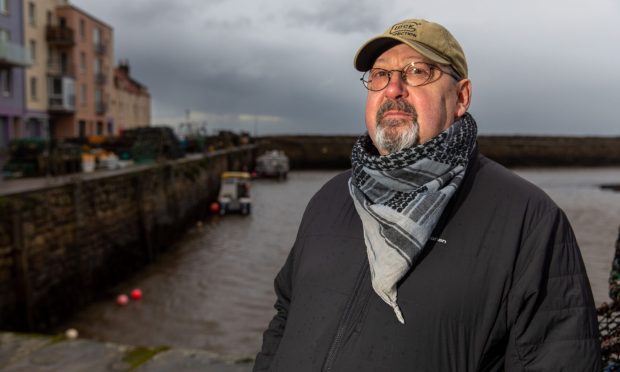
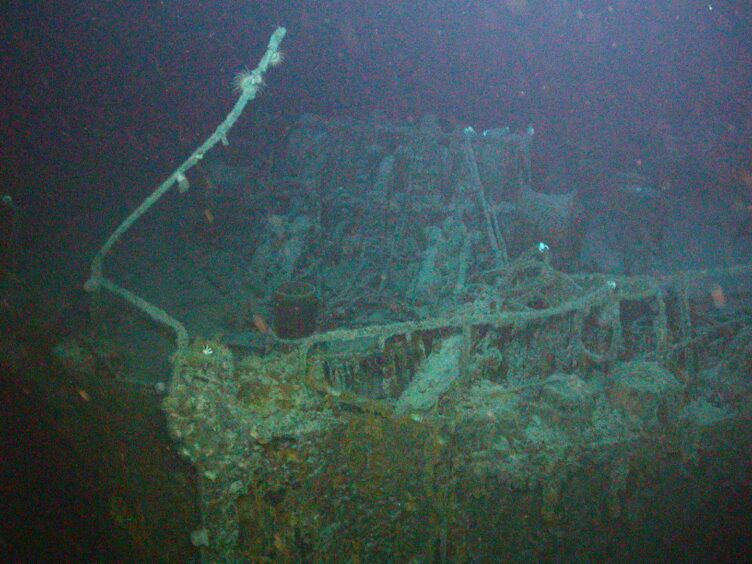
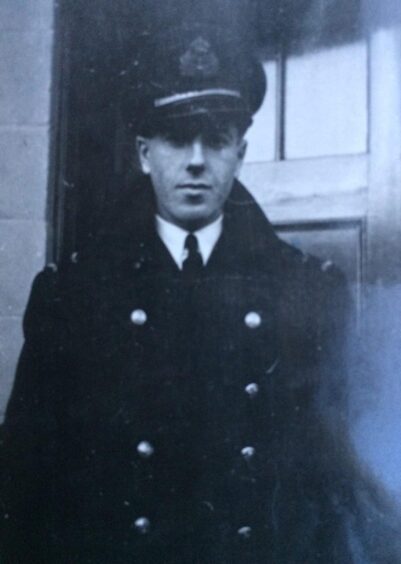
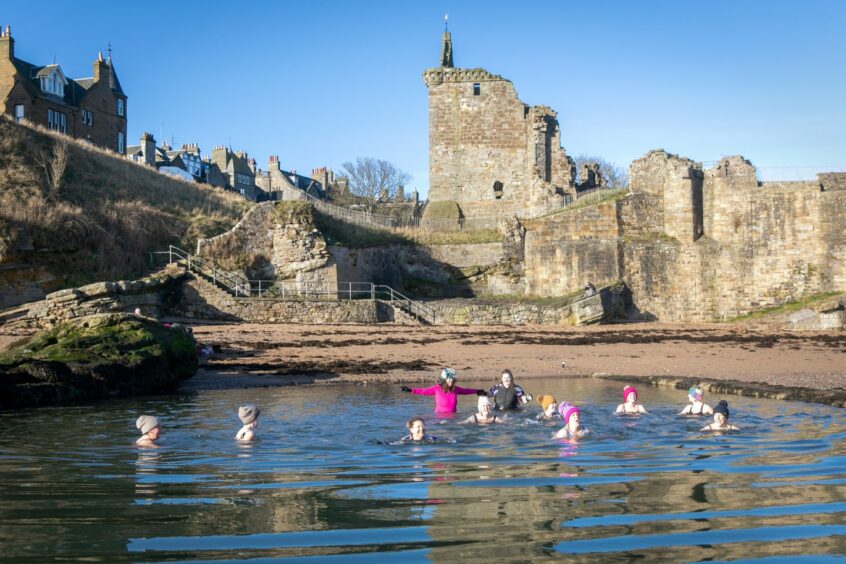
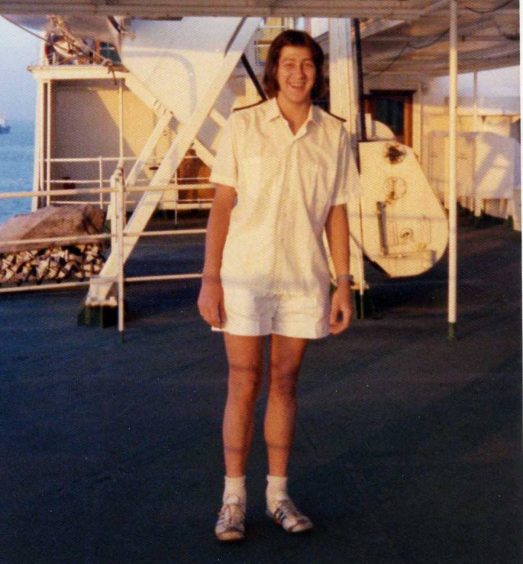

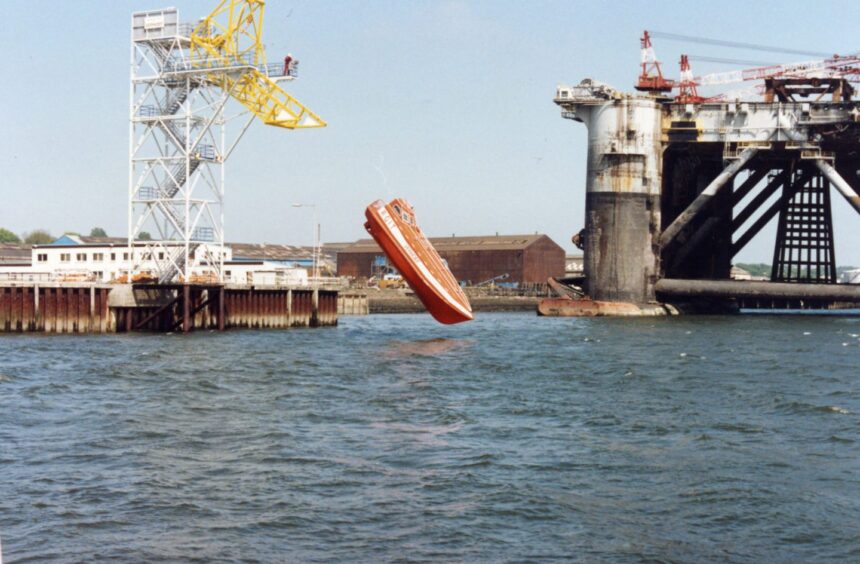
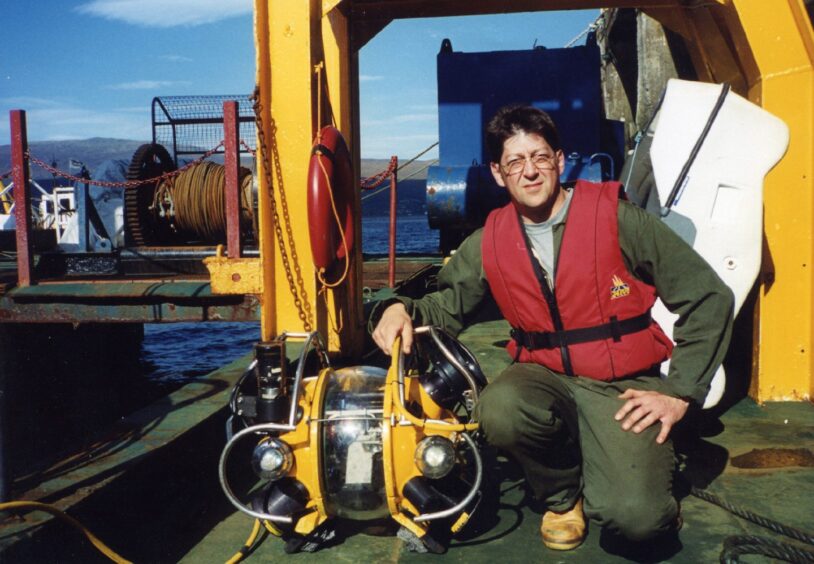

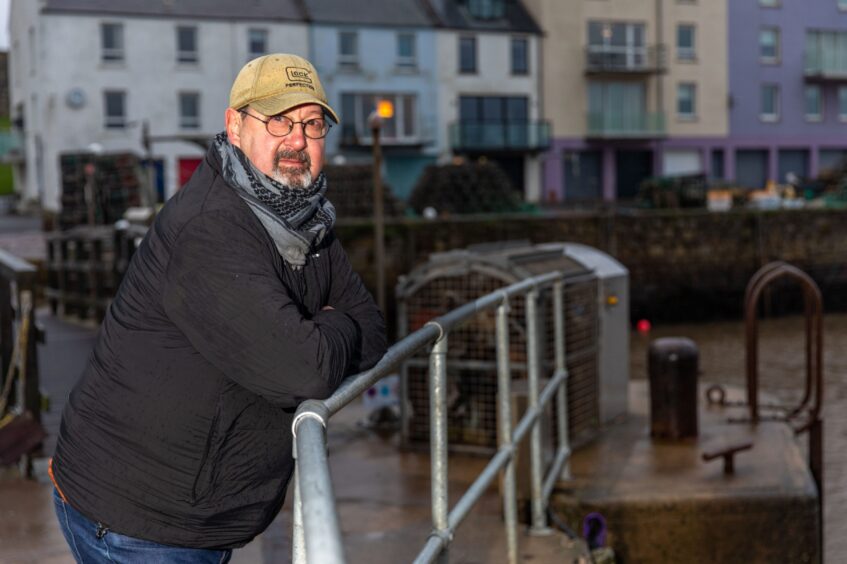
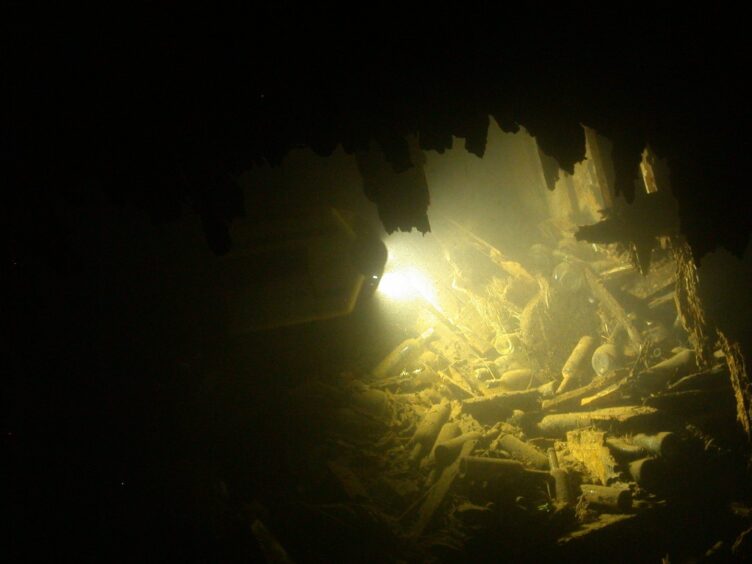











Conversation